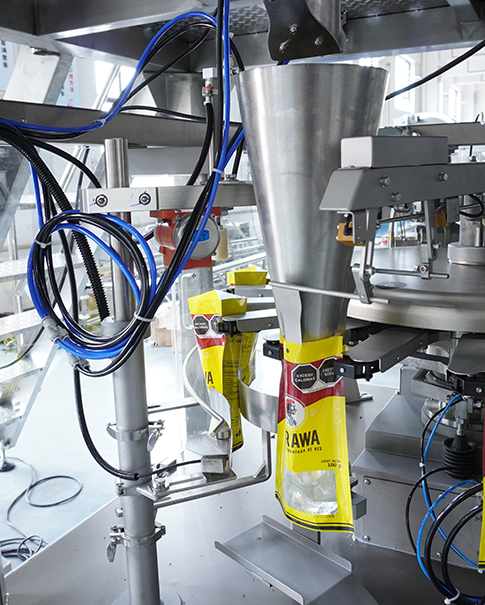Honey Spoon Packaging: The Growing Demand and Advancements in Filling and Sealing Machines
Mar 21, 2025
Changing Consumer Demands: Convenience and Portability
As life becomes faster-paced, consumers are increasingly seeking convenience and portability in their food products. Honey, being a commonly used item, traditionally comes in large jars that are not ideal for on-the-go use. As more people seek single-serving options, the demand for single-serve honey packaging has grown, leading to the popularity of honey spoon packaging.
Honey spoon packaging not only solves the problem of carrying large jars of honey but also addresses issues like leakage and wastage. These single-serve honey spoons are easy to use and transport, making them perfect for hotels, restaurants, cafes, and even for personal use while traveling or in the office.
The Rise of Honey Spoon Packaging
Honey spoon packaging is a practical innovation that caters to modern consumer needs. Unlike traditional honey jars, which are bulky and prone to spillage, honey spoons offer:
Convenience: Each spoon holds a precise amount of honey, making it easy for consumers to use without needing additional utensils or containers.
Hygiene: The sealed packaging ensures that the honey remains uncontaminated, providing a more hygienic alternative.
Waste Reduction: Since each spoon holds a fixed amount of honey, it helps avoid wastage, ensuring that consumers only take as much as they need.
This type of packaging is widely used in single-serve food and meal accompaniment products, making it popular in settings like restaurants, hotels, and cafes.
Demand for Honey Spoon Filling and Sealing Equipment
As the demand for single-serve honey packaging grows, the need for efficient plastic honey spoon filling machine has also increased. These machines automate the process of filling and sealing honey spoons, improving production efficiency and ensuring product consistency.
Main Functions of Honey Spoon Filling and Sealing Machines
Filling: Honey filling machines typically use volumetric, piston, or pump-based systems to ensure accurate and consistent filling of honey into spoons or small containers.
Sealing: After filling, the sealing machine applies a heat seal or press seal to close the opening of the spoon packaging, preventing any leakage of honey. Heat sealing involves applying heat to a sealing film, which adheres tightly to the container's opening.
Efficiency and Automation: Modern filling and sealing machines are highly automated, reducing labor costs and increasing productivity. These machines can operate at high speeds, with some models achieving hundreds or even thousands of spoons per hour.
Additionally, some advanced machines come with quality control systems that can detect filling errors, leakage, or defective seals, ensuring that every product meets strict quality standards.
Market Trends and Future Outlook
The rise of honey spoon packaging reflects broader consumer trends for healthier, more convenient food options. As more people seek on-the-go solutions, honey spoon packaging is expected to grow in popularity not just in honey but in other similar food products like syrups, jams and chocolate spread.
Meanwhile, the demand for advanced honey spoon filling sealing machines will continue to rise, driving innovation in automation, precision, and production speed. We can expect future developments to include even more intelligent systems, with features like real-time monitoring, data analysis, and predictive maintenance, making the production process even more efficient and error-proof.
In summary, the popularity of honey spoon packaging is a response to changing consumer demands for convenience and portability, while the development of filling and sealing equipment helps manufacturers meet these needs efficiently. With continued innovation in both consumer preferences and production technology, this sector is likely to expand significantly. If you’d like to dive deeper into any aspect of this, feel free to contact Jason Machinery!

